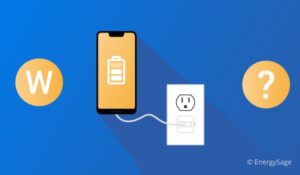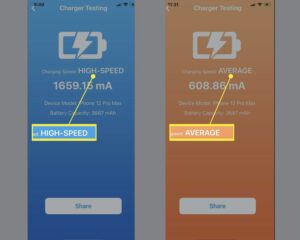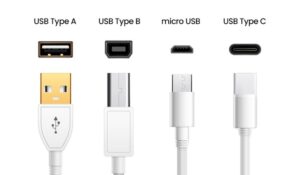Looking to discharge a car battery? You’ve come to the right place! In this article, we’ll walk you through the steps of safely and effectively discharging your car battery. Whether you need to discharge it for maintenance purposes, to replace an old battery, or simply because you’re facing a dead battery situation, we’ve got you covered. So, if you’re wondering how to discharge a car battery, keep reading for a step-by-step guide that will help you get the job done efficiently. Let’s dive right in!
How to Discharge a Car Battery: A Comprehensive Guide
Introduction
A car battery is a crucial component of your vehicle’s electrical system. It provides the necessary power to start the engine and run various electrical accessories. However, there are situations where you may need to discharge the car battery intentionally. Whether you need to perform maintenance or replace a faulty battery, knowing how to discharge it safely is essential.
In this comprehensive guide, we will walk you through the step-by-step process of discharging a car battery. We will discuss various methods and precautions to ensure both your safety and the longevity of your vehicle’s battery.
Why Would You Need to Discharge a Car Battery?
Discharging a car battery is not something you’ll need to do regularly. However, there are a few situations where it becomes necessary:
1. Replacing an old battery: Before installing a new battery, you may want to discharge the old one completely to avoid any electrical issues or potential safety hazards.
2. Testing a battery’s capacity: By completely discharging the battery, you can measure its maximum capacity and determine if it needs replacement.
3. Performing maintenance: Some maintenance tasks, such as cleaning or inspecting the battery, may require it to be discharged. This ensures that there’s no electrical power flowing through the system during the process.
4. Resetting the battery management system: In some newer vehicles, discharging the battery can help recalibrate the system, resolving any electrical or performance issues.
Safe Discharging Methods
Before we dive into the various methods of discharging a car battery, it’s important to note that safety should be your top priority. Follow these general safety guidelines when working with car batteries:
1. Wear protective gear: Put on safety glasses and gloves to protect yourself from potential acid leaks or electrical shocks.
2. Disconnect the battery: Always disconnect the negative (-) terminal first, followed by the positive (+) terminal. This prevents accidental short-circuits.
3. Work in a well-ventilated area: Car batteries emit potentially harmful gases, so ensure you’re working in a well-ventilated space or outdoors.
4. Avoid sparks and open flames: Keep any sources of ignition, such as cigarettes or open flames, far away from the battery.
Method 1: Use a Battery Discharger
One of the easiest and most efficient ways to discharge a car battery is by using a battery discharger. This device is specially designed to safely drain the battery’s power without causing any damage. Here’s how to use a battery discharger:
1. Prepare the battery discharger: Read the manufacturer’s instructions to ensure you set up the discharger correctly. Connect the discharger’s cables to the battery terminals, matching the positive and negative terminals accordingly.
2. Set the discharge rate: Most battery dischargers allow you to set the discharge rate. Follow the manufacturer’s recommendations or choose a slow discharge rate to avoid potential damage to the battery.
3. Monitor the process: Keep an eye on the discharger’s display or indicator lights to track the progress of the discharge. The discharging process may take several hours, depending on the battery’s capacity.
4. Disconnect the discharger: Once the battery is fully discharged, disconnect the discharger from the battery terminals. Remember to remove the negative cable first, followed by the positive cable.
Using a battery discharger is a safe and controlled method to discharge your car battery. However, if you don’t have access to a discharger, there are alternative methods you can try.
Method 2: Use a Light Bulb
Using a light bulb as a load is another effective way to discharge a car battery. Essentially, you’re creating a circuit with the battery and the bulb, allowing the current to flow through the bulb and gradually drain the battery. Here’s how to do it:
1. Gather the materials: You’ll need a 12-volt light bulb, a socket, and a couple of wires with alligator clips.
2. Prepare the circuit: Insert the light bulb into the socket and connect one end of the wire to the positive terminal of the battery and the other end to the metal base of the bulb socket. Attach another wire from the negative terminal of the battery to any metallic part of the vehicle’s chassis.
3. Monitor the process: The light bulb will start to illuminate, indicating that the battery is discharging. Keep an eye on the brightness of the bulb to track the discharge progress.
4. Disconnect the circuit: Once the bulb is dim and no longer illuminating, the battery is discharged. Safely disconnect the circuit by removing the wires from the battery terminals.
Using a light bulb is a suitable method if you don’t have access to a battery discharger. However, ensure that you use the correct voltage bulb that matches your car battery (usually 12 volts).
Method 3: Use Electrical Accessories
If you don’t have a battery discharger or a light bulb at your disposal, you can still discharge the battery using your vehicle’s electrical accessories. Here’s how:
- Turn off the engine: Ensure the engine is turned off and the vehicle is in park or neutral with the parking brake engaged.
- Turn on the accessories: Start by turning on various electrical accessories, such as headlights, interior lights, radio, and air conditioning. You want to draw power from the battery and gradually drain it.
- Monitor the battery voltage: Use a multimeter or voltmeter to measure the battery voltage periodically. This allows you to track the discharge progress and ensure the battery doesn’t fully deplete.
- Disconnect the battery: Once the battery voltage reaches a significantly low level (around 11 volts), disconnect the battery terminals following the safety guidelines mentioned earlier.
Using electrical accessories can be a slower method compared to a dedicated battery discharger, but it can still effectively discharge the battery.
Precautions When Discharging a Car Battery
While discharging a car battery, it’s important to keep a few precautions in mind:
1. Don’t discharge too rapidly: Rapidly discharging a battery can cause irreversible damage. Ensure you use a safe discharge rate to avoid overheating or other potential hazards.
2. Monitor the battery temperature: As the battery discharges, it may heat up. Keep an eye on its temperature and pause the discharge process if it becomes excessively hot.
3. Recharge the battery promptly: Once the battery is discharged, it’s crucial to recharge it promptly to prevent sulfation and other potential issues that can affect its overall lifespan.
4. Dispose of old batteries responsibly: If you’re replacing an old battery, be sure to dispose of it properly at a designated recycling center. Car batteries contain hazardous materials and should not be thrown in regular waste bins.
Discharging a car battery is a task that may not be required often, but it’s important to know the different methods and precautions involved. Whether you have a dedicated battery discharger or are using alternative methods like a light bulb or electrical accessories, following safety guidelines is crucial.
Remember, safety should always be your priority when working with car batteries. By discharging your car battery properly, you can ensure its longevity and avoid potential electrical issues in the future.
FAQs
Below are some frequently asked questions related to discharging car batteries:
1. Can I discharge a car battery by leaving the lights on?
Yes, leaving the lights or any other electrical accessories on for an extended period can discharge the car battery. However, this method is not recommended as it can lead to a complete battery drain and potential damage.
2. How long does it take to discharge a car battery using a battery discharger?
The time it takes to discharge a car battery using a battery discharger depends on several factors, including the battery’s capacity and the discharge rate set on the discharger. It can vary from a few hours to overnight.
3. Is it necessary to discharge a new car battery before use?
No, new car batteries usually come partially charged and ready for use. There is no need to discharge them before installation. Refer to the manufacturer’s instructions for specific guidelines.
4. Can I use a higher voltage bulb to discharge my car battery?
No, using a higher voltage bulb than the battery’s rating can potentially damage the battery and the electrical system of your vehicle. Always use a bulb with the appropriate voltage.
Remember to refer to your vehicle’s owner’s manual or consult a professional if you have any specific concerns or questions regarding discharging your car battery.
How to Disconnect and Reconnect the Car Battery
Frequently Asked Questions
How can I discharge a car battery?
Discharging a car battery can be done using various methods. Here are a few ways you can discharge a car battery:
Can I discharge a car battery by leaving the headlights on?
Yes, leaving the headlights on is one way to discharge a car battery. By keeping the lights on for an extended period, the battery will slowly drain until it is completely discharged.
Is it safe to use an in-car accessory to discharge the battery?
Using an in-car accessory, such as the radio or air conditioning, can also discharge the car battery. However, it is important to note that excessive use of these accessories can lead to a quicker battery drain and may require a jump-start to get the car running again.
Can I discharge a car battery by simply disconnecting it?
Disconnecting the car battery is another method to discharge it. By disconnecting the negative terminal, the battery will slowly lose its charge. However, keep in mind that disconnecting the battery for an extended period may result in the loss of certain settings or codes in the car’s systems.
What precautions should I take when discharging a car battery?
When discharging a car battery, it is important to ensure safety. Here are a few precautions you should consider:
- Work in a well-ventilated area to avoid the buildup of potentially explosive gases.
- Wear safety goggles and gloves to protect yourself from any chemicals or sparks.
- Make sure to disconnect the negative terminal of the battery before starting the discharge process.
- Avoid discharging the battery completely as it may lead to irreversible damage.
How long does it take to discharge a car battery?
The time it takes to discharge a car battery depends on various factors such as the battery’s capacity and the method used for discharging. Leaving the headlights on or using in-car accessories can typically take several hours to drain the battery, while disconnecting the battery may take longer.
Final Thoughts
To discharge a car battery, there are a few methods you can try. One option is to disconnect the battery and let it sit for a few days until it naturally discharges. Another method is to use a power drain device specifically designed to discharge batteries safely and efficiently. You can also try using electrical accessories or lights to drain the battery manually. Whichever method you choose, always ensure safety precautions and consult your vehicle’s manual for specific instructions. By following these steps, you can successfully discharge a car battery.




